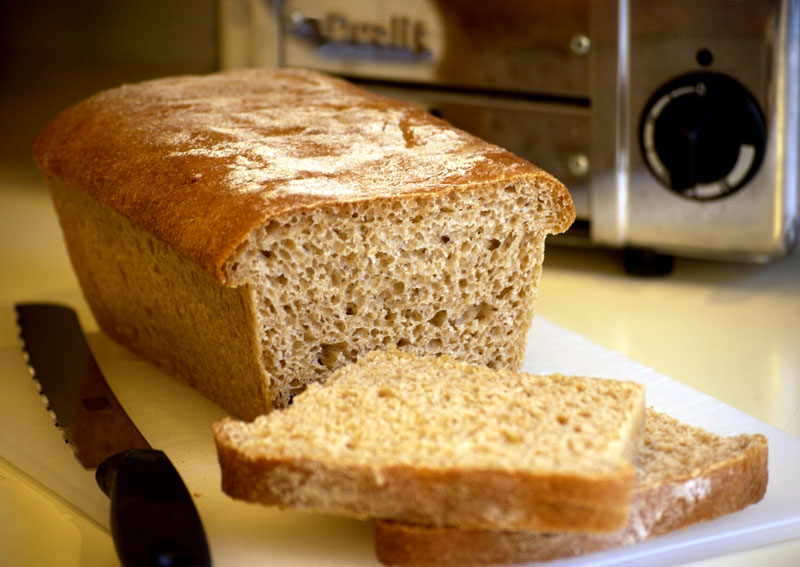For a long time, I’ve been scorning sandwich bread, and my loaf pans have gone unused. I can think of several reasons. For one, I’m addicted to hot bread. For two, I try not to rely too much on sandwiches. But sandwiches have their place, especially on busy days. And especially in the winter, there’s nothing like hot toast at breakfast. Sandwich bread is very convenient for making toast.
To me there are really two basic types of bread dough. First is the type of dough that leads to French bread. It has a complex crust and a stretchy texture. To get French bread, you need only flour, water, yeast, and salt. There’s nothing like French bread when it’s fresh. But it soon becomes useless. The French have a saying that goes something like: On the first day it’s bread, on the second day it’s toast, and on the third day it’s a doorstop. French bread must be used pretty quickly, or it becomes chicken treats — though it can be converted to bread crumbs, or used in certain puddings. The French call it pain perdu, or lost bread. In some French recipes, pain perdu is like our French toast — stale bread dipped in a sweet batter and fried.
The dough for sandwich bread is different. For sandwich bread you want milk in the dough, and butter or oil. This changes the crumb and the crust of the bread. The bread stays more moist. It’s more cake-like. It is tender and slices much easier. And it’s good for toast or sandwiches for three days, maybe even four. Sandwich bread, though, is not nearly as good when you want warm fresh bread to serve with supper.
As regular readers know, I almost never list recipes. This is because I never obey recipes. I find a recipe that I like and trust as a starting point, and I modify it to suit myself. Here is a good starting recipe for sandwich bread from King Arthur flour. I use olive oil instead of butter, I use a little less oil than they call for, and I use about two-thirds whole wheat flour. I also put it in a hotter oven for the first 10 minutes, then reduce the heat and adjust the baking time. I find that bread rises better in the oven if the oven is hot enough to give it a quick pop. Then lower the heat. Oh what I would give for a commercial bread oven, with steam. Actually that’s not true. I wouldn’t give what they cost — thousands of dollars even for a small one. So we have to do the best we can with the ovens in domestic ranges.

